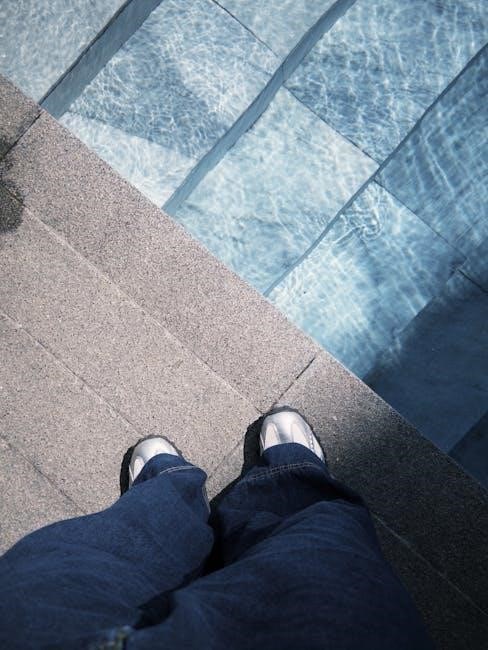
Intex pool installation is a straightforward process with proper planning and tools. Essential steps include site preparation, pool setup, pump installation, and maintenance to ensure safety and durability.
Site Preparation for Intex Pool
Site preparation is crucial for a stable setup. Clear debris, level the ground, and ensure a firm surface by packing soil, applying sand, and using a barrier for optimal installation.
2.1. Clearing the Area
Clearing the area is the first step in Intex pool installation. Remove grass, debris, and obstructions to ensure a smooth setup. Uneven or obstructed ground can cause instability, so thoroughly inspect and prepare the site. If the ground is soft or uneven, additional measures like compacting the soil or adding sand may be necessary. Some users recommend using weed killer to prevent growth beneath the pool, ensuring long-term stability. Proper clearing and preparation prevent issues like the pool becoming lopsided or damaged. Always follow manufacturer guidelines for site readiness to ensure a safe and durable installation. A well-prepared area guarantees a stable foundation for your Intex pool, enhancing safety and extending its lifespan.
2.2. Leveling the Ground
Leveling the ground is a critical step in Intex pool installation. An uneven surface can cause the pool to lean, leading to structural issues or even damage. Start by marking the area where the pool will be placed, using a rope or hose to outline the dimensions. Use a shovel to dig slightly into the ground, ensuring the area is flat. A spirit level tool is essential for checking evenness. If the ground is uneven, remove or add soil as needed. For precise leveling, some users recommend using a laser level or tamping tool. Ensure the ground is firm and even before proceeding. Proper leveling prevents the pool from shifting and ensures safe and stable use. Take your time with this step, as it directly impacts the pool’s performance and longevity.
2.3. Sand Preparation
Sand preparation is essential for creating a smooth and protective base for your Intex pool. After leveling the ground, spread a 2-inch layer of fine sand evenly across the marked area. Use a rake to ensure uniform coverage. Compact the sand using a hand tamper or plate compactor to create a firm surface. This step prevents the pool liner from punctures and ensures proper drainage. Once compacted, check the surface with a spirit level to confirm it’s even. If necessary, add more sand to low areas and re-tamp. Avoid using coarse sand, as it may not provide adequate protection. Proper sand preparation ensures the pool sits evenly and prevents damage to the liner or frame. It’s a key step for long-term durability and safe pool operation.
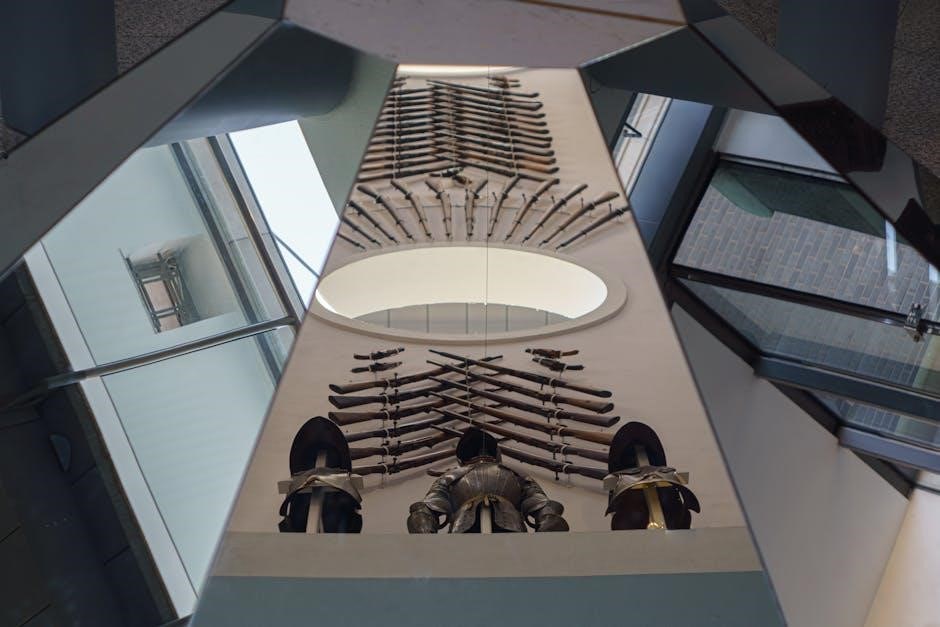
Setting Up the Intex Pool
Place the pool liner in the center of the prepared area, ensuring it fits snugly. Attach the frame or inflate the top ring securely. Follow instructions carefully to ensure proper assembly and alignment. Double-check all connections and fittings before moving forward. Ensure the pool is evenly spaced and the liner is smooth to avoid wrinkles or damage during use.
3.1. Easy Set Pool Setup
Begin by selecting a flat, level area in your backyard, ensuring it is clear of debris and obstructions. Lay out the pool liner, centering it on the prepared ground. Inflate the top ring of the pool slowly and evenly to maintain the pool’s shape. Once the ring is fully inflated, attach the pump and filter system according to the manufacturer’s instructions. Connect the hoses securely to prevent leaks. Finally, start filling the pool with water while ensuring all connections are tight. Regularly skim the surface to keep the water clean and consider adding safety features like a fence to protect children. Follow the provided instructions closely to ensure proper setup and enjoy your new pool!
3.2. Metal Frame Pool Setup
Unpack and inventory all components, ensuring no parts are missing. Begin by connecting the frame pieces together, following the manufacturer’s instructions. Attach the pool liner securely to the frame using the provided pins and clips. Make sure the liner is tightly fitted to prevent wrinkles or sagging. Inflate the top ring of the pool and attach it to the frame. Connect the pump and filter system, ensuring all hoses are securely fitted. Tighten all bolts and screws to ensure the frame is stable and level. Double-check that the ground is even and the pool is properly supported. Follow the user manual for specific assembly steps, as different models may vary. Proper assembly ensures safety and longevity of the pool. Always refer to the provided instructions for precise guidance.

Pump and Filter System Installation
Connect the pump to the pool and attach hoses securely. Place the filter system nearby and ensure all connections are tight for optimal water circulation and safety.
4.1. Pump Installation
Start by positioning the pump on a level, stable surface near the pool. Ensure the pump is placed on a platform or pad to protect it from ground moisture. Connect the intake and return hoses to the appropriate ports on the pool and pump. Tighten all connections securely to prevent leaks. Plug the pump into a nearby GFCI-protected outlet, ensuring the power cord is not submerged in water. Prime the pump by filling it with water before turning it on. Allow the pump to run for a few minutes to ensure proper operation. Regularly inspect the pump for signs of wear or damage, and clean the basket as needed to maintain optimal performance. Always follow the manufacturer’s instructions for specific installation details.
4.2. Filter System Setup
Begin by positioning the filter system near the pump on a level surface. Connect the hoses from the pump to the filter, ensuring they are securely attached to avoid leaks. Install the filter cartridge according to the manufacturer’s instructions, making sure it is properly seated and sealed. Connect the return hose from the filter to the pool inlet. Turn on the pump and check for leaks in all connections. Allow the system to run for a few minutes to ensure proper water circulation. The filter may appear dirty initially as it starts filtering the water. Always refer to the user manual for specific filter setup instructions, as models may vary. Regular maintenance, like cleaning or replacing the cartridge, is essential for optimal performance.

Filling the Pool with Water
Begin by connecting a garden hose to a nearby water supply and attach it to the pool’s designated inlet fitting. Ensure the hose is long enough to reach the pool without kinking. Turn on the water supply and allow the pool to fill slowly. Place the hose in the center of the pool to distribute water evenly and prevent the pool from shifting or deforming. Monitor the water level closely to avoid overfilling, as this can cause damage to the pool or surrounding area. Once filled to the recommended level, turn off the water supply and remove the hose. Allow the pump and filter system to circulate the water before use. Always ensure the water level remains above the minimum mark specified in the user manual.

Common Mistakes to Avoid
One of the most common mistakes during Intex pool installation is rushing the site preparation process. Ensure the ground is completely level and clear of debris, as uneven surfaces can damage the pool liner. Another mistake is neglecting to lay a sufficient layer of sand, which protects the pool from sharp objects and improves drainage. Overfilling the pool is also a frequent error, as it can lead to structural stress and potential leaks. Additionally, some users forget to follow the manufacturer’s instructions for assembling the frame or connecting the pump and filter system, which can result in poor performance or safety hazards. Always double-check the user manual and take your time during each step to ensure a safe and enjoyable setup.
Maintenance Tips
Regular pool maintenance is essential for longevity. Clean the filter and pool floor frequently, check chemical levels, and ensure proper water circulation for a safe and enjoyable experience.
7.1. Regular Cleaning
Regular cleaning is crucial for maintaining your Intex pool’s hygiene and functionality. Start by skimming the surface daily to remove floating debris using a pool skimmer. Vacuum the pool floor weekly to eliminate dirt and sediment. Clean the filter regularly according to the manufacturer’s instructions to ensure proper water circulation. Check and balance the chemical levels to prevent algae growth and maintain safe swimming conditions. Additionally, inspect the pool walls and floor for stains or algae buildup and scrub them as needed. Finally, clean the surrounding area to prevent dirt and leaves from entering the pool. Consistent cleaning will keep your Intex pool pristine and extend its lifespan.
7.2. Chemical Maintenance
Proper chemical maintenance is essential for keeping your Intex pool water clean, safe, and clear. Regularly test the pH levels and adjust them to a range of 7.2–7.8 to ensure swimmer comfort and prevent corrosion. Maintain chlorine levels between 1–3 ppm to sanitize the water effectively. Shock the pool weekly to eliminate contaminants and odors. Use algaecide to prevent algae growth, especially in warmer climates. Test the water at least twice a week using test strips for accuracy. Adjust chemicals as needed, following the manufacturer’s instructions. Proper chemical balance prevents cloudiness, skin irritation, and damage to pool equipment. Always handle chemicals safely and store them out of reach of children. A consistent routine ensures a healthy and enjoyable swimming environment for years to come.
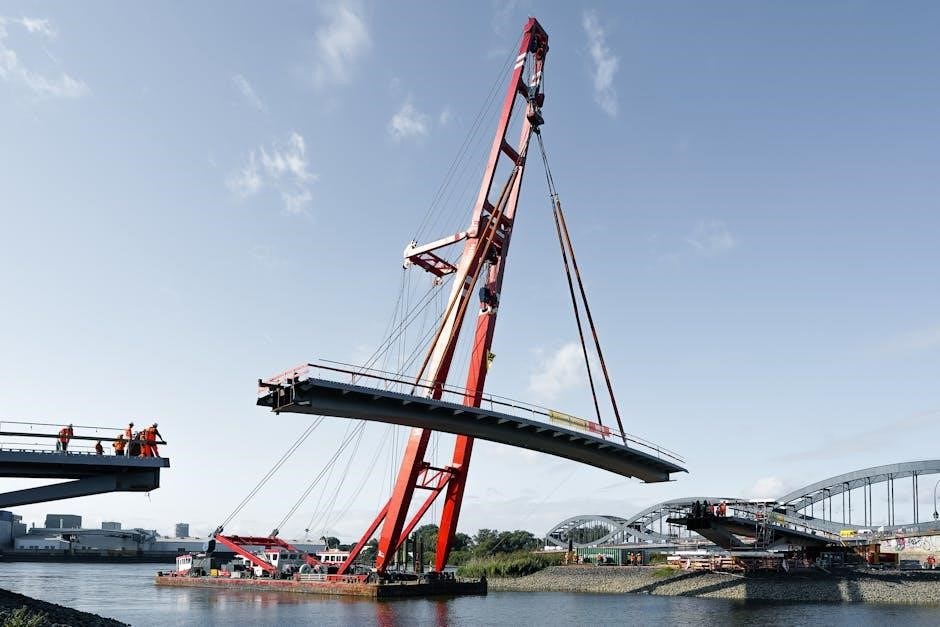
Safety Considerations
Ensuring safety is a top priority when installing and using an Intex pool. Always fence the pool area to prevent unauthorized access, especially for children and pets. Install a self-latching gate and keep it locked when the pool is not in use. Supervise children at all times while they are in or near the pool. Avoid diving or horseplay, as this can lead to injuries. Remove pool toys and floats after use to avoid attracting children to the water unsupervised. Use non-slip surfaces around the pool to reduce the risk of falls. Keep emergency equipment, such as a first aid kit and a phone, nearby. Never swim alone, and follow all local safety regulations and building codes. Regularly inspect the pool and surrounding area for hazards and address them promptly to ensure a safe environment for everyone.
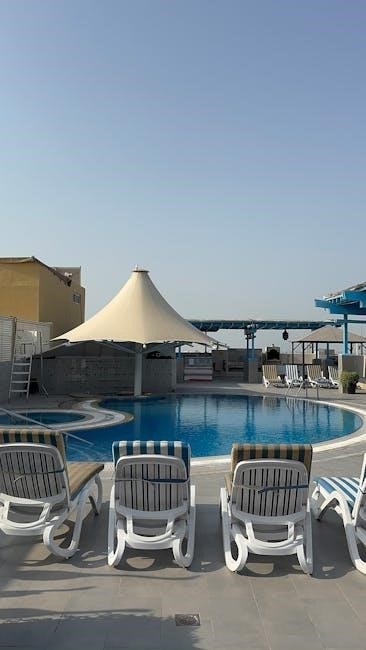
Additional Accessories
Enhance your Intex pool experience with practical accessories like pool covers, heaters, and cleaning tools. These additions improve functionality, safety, and overall enjoyment of your pool.
9.1. Solar Covers
Solar covers are an excellent addition to your Intex pool, helping to retain heat and reduce water evaporation. They work by trapping sunlight during the day, keeping the water warm for extended periods. This accessory is especially useful for pools used in cooler climates or during the evening. Solar covers also prevent debris like leaves and dirt from entering the pool, reducing cleaning efforts. They are lightweight, easy to install, and come in sizes specifically designed for Intex pools. By using a solar cover, you can save on heating costs and maintain a comfortable swimming temperature. Regular use extends the pool season and ensures your pool stays clean and energy-efficient.
9.2. Pool Heaters
Pool heaters are a great way to extend your swimming season by maintaining a comfortable water temperature, even in cooler weather. Intex offers various heater options, including electric, gas, and solar models, designed to work seamlessly with their pools. These heaters are energy-efficient and easy to install, ensuring consistent warmth for a more enjoyable swimming experience; When choosing a heater, consider the size of your pool and your budget. Proper installation is crucial, so follow the manufacturer’s instructions or consult a professional. Regular maintenance, such as cleaning and inspecting the heater, will ensure optimal performance. By investing in a pool heater, you can enjoy your Intex pool year-round, regardless of the weather conditions.

Troubleshooting Common Issues
During the installation or operation of your Intex pool, you may encounter common issues such as leaks, pump malfunctions, or uneven pool walls. To address leaks, inspect the pool liner and connections for any cracks or loose fittings. For pump issues, ensure proper priming and check for clogs in the filter or pipes. Uneven pool walls can be corrected by adjusting the ground leveling or tightening the frame. Regularly inspect all components to prevent small problems from escalating. If issues persist, consult the user manual or contact Intex customer support for assistance. Prompt troubleshooting ensures your pool remains safe, functional, and enjoyable for years to come.
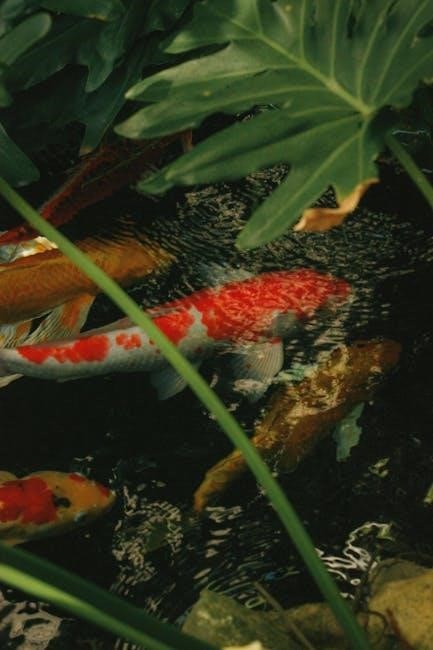
Warranty and Customer Support
Intex pools typically come with a limited warranty covering manufacturing defects for a specified period, usually ranging from 1 to 3 years depending on the product. The warranty often includes coverage for the pool liner, frame, and other components. To claim warranty benefits, ensure proper installation following the provided instructions and maintain the pool as recommended. For any issues, Intex offers customer support through phone, email, or online portals. Be prepared to provide proof of purchase and details about the problem. Additionally, the company may offer extended warranty options or dedicated support for troubleshooting. Always refer to the official Intex website for the most accurate warranty terms and contact information. Timely support and warranty services ensure your pool remains functional and enjoyable for years to come.
User Reviews and Feedback
Many users have shared positive experiences with Intex pool installations, praising their affordability and ease of setup. Reviews highlight the pools as great options for temporary or seasonal use, with the Easy Set models being particularly popular. Customers often appreciate the clear instructions and the relatively quick installation process. However, some users mention that larger pools can be more challenging to set up and may require additional tools or assistance. Feedback also emphasizes the importance of proper site preparation to ensure a smooth experience. Overall, Intex pools are well-regarded for their value, durability, and family-friendly design, making them a top choice for many homeowners and families looking to enjoy a fun and refreshing swimming experience without breaking the bank.
Installing an Intex pool is a rewarding project that can provide countless hours of fun and relaxation for the whole family. By following the detailed instructions and preparation steps outlined in this guide, you can ensure a smooth and successful setup process. Intex pools are known for their durability and ease of use, making them a great choice for homeowners of all skill levels. Remember to maintain your pool regularly, avoid common mistakes, and prioritize safety to maximize your enjoyment. With proper care, your Intex pool will remain a refreshing and enjoyable addition to your backyard for years to come. Start your project today and dive into the endless benefits of owning an Intex pool!

Frequently Asked Questions
Here are some common questions about Intex pool installation:
- What is the best location for an Intex pool? Choose a flat, sunny spot away from trees to avoid debris.
- How long does installation take? Setup can take 1-3 hours, depending on the pool size and site preparation.
- Do I need a pump and filter? Yes, they are essential for maintaining clean and safe water.
- Can I install the pool on concrete? No, use a soft surface like grass or sand to prevent damage.
- How often should I clean the pool? Regular skimming and vacuuming are recommended to keep the water clear.
These answers address common concerns and ensure a hassle-free Intex pool experience.